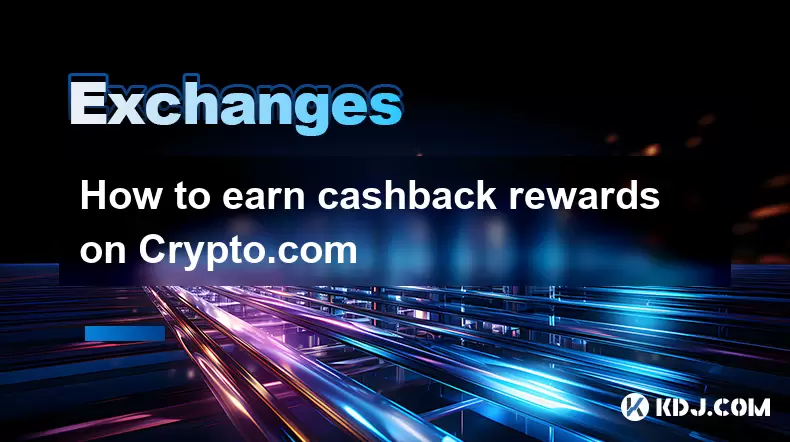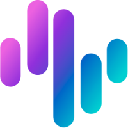-
 Bitcoin
Bitcoin $117800
-3.15% -
 Ethereum
Ethereum $4539
-3.66% -
 XRP
XRP $3.072
-6.08% -
 Tether USDt
Tether USDt $1.000
0.02% -
 BNB
BNB $834.3
-1.03% -
 Solana
Solana $193.1
-2.71% -
 USDC
USDC $0.9997
-0.01% -
 TRON
TRON $0.3583
-0.87% -
 Dogecoin
Dogecoin $0.2233
-8.06% -
 Cardano
Cardano $0.9033
3.60% -
 Chainlink
Chainlink $22.34
-5.78% -
 Hyperliquid
Hyperliquid $44.87
-4.90% -
 Stellar
Stellar $0.4226
-6.29% -
 Sui
Sui $3.765
-5.57% -
 Bitcoin Cash
Bitcoin Cash $588.5
-3.94% -
 Ethena USDe
Ethena USDe $1.001
0.00% -
 Hedera
Hedera $0.2489
-5.54% -
 Avalanche
Avalanche $23.69
-5.77% -
 Litecoin
Litecoin $120.8
-6.90% -
 Toncoin
Toncoin $3.398
-2.63% -
 UNUS SED LEO
UNUS SED LEO $9.276
0.31% -
 Shiba Inu
Shiba Inu $0.00001285
-7.22% -
 Uniswap
Uniswap $10.92
-9.38% -
 Polkadot
Polkadot $3.991
-5.68% -
 OKB
OKB $94.79
-8.25% -
 Dai
Dai $0.9998
0.01% -
 Bitget Token
Bitget Token $4.553
-4.67% -
 Cronos
Cronos $0.1514
-8.71% -
 Ethena
Ethena $0.7243
-7.57% -
 Aave
Aave $310.5
-5.14%
Is OKX's gas fee calculation transparent?
OKX's gas fees, determined by blockchain network congestion and transaction complexity, aren't fully transparent algorithmically but offer sufficient information for users to understand and manage costs via displayed estimates and provided tools.
Mar 14, 2025 at 02:00 pm

Key Points:
- OKX's gas fee calculation is not completely transparent in the same way as some other platforms, but it provides enough information for users to understand the factors influencing the cost.
- Gas fees on OKX are primarily determined by network congestion and the complexity of the transaction. OKX itself doesn't directly set these fees; they are inherent to the underlying blockchain.
- While OKX displays the estimated gas fee before confirmation, this estimate can fluctuate slightly depending on network conditions.
- Understanding the factors influencing gas fees allows users to optimize their transactions and minimize costs.
- OKX provides tools and resources to help users monitor and manage gas fees, though complete transparency in the precise algorithmic calculation isn't publicly available.
Is OKX's Gas Fee Calculation Transparent?
The question of OKX's gas fee transparency is complex. Unlike some centralized exchanges that explicitly state their fee structure, OKX operates on several different blockchains, each with its own gas fee mechanism. This means a single, universally transparent calculation method isn't applicable. Instead, OKX relays the gas fees determined by the underlying blockchain network. Therefore, while OKX displays an estimated gas fee before transaction confirmation, the precise calculation details remain somewhat opaque to the average user. The exchange doesn't reveal the exact internal algorithm used to estimate the gas.
Factors Influencing Gas Fees on OKX
Several key factors determine the gas fees you'll encounter on OKX. These are not directly controlled by OKX, but rather are inherent characteristics of the blockchain networks it supports:
- Network Congestion: Higher network activity leads to increased competition for block space, resulting in higher gas fees. This is a fundamental aspect of blockchain technology. Think of it like rush hour traffic – more cars mean slower speeds and higher costs (in this case, gas fees).
- Transaction Complexity: More complex transactions, such as those involving multiple assets or smart contracts, generally require more computational power and thus incur higher gas fees. A simple token transfer will cost less than a complex decentralized application (dApp) interaction.
- Gas Price (Gwei): This is the unit of measurement for gas fees on many blockchains, including Ethereum and its compatibles. The gas price fluctuates based on network demand. A higher Gwei value means a higher gas fee. OKX will usually display this value in the transaction preview.
- Gas Limit: This refers to the maximum amount of gas a transaction is allowed to consume. Setting a gas limit too low can result in transaction failure, while setting it too high unnecessarily increases the cost. OKX usually provides a recommended gas limit.
How OKX Displays Gas Fees
Before confirming any transaction, OKX presents an estimated gas fee. This estimate is derived from real-time network data, but it's crucial to understand that it’s an estimate. The actual gas fee might vary slightly, depending on network conditions between the estimation and the transaction's inclusion in a block. This minor variance is common across all platforms utilizing blockchain technology. The displayed estimate, however, provides a reasonable indication of the cost you should expect.
Optimizing Gas Fees on OKX
While you can't directly control the underlying blockchain's gas fee mechanism, you can take steps to minimize your expenses:
- Choose Off-Peak Times: Transacting during periods of lower network activity usually results in lower gas fees. This often means avoiding peak trading hours.
- Batch Transactions: Combining multiple transactions into a single batch can sometimes reduce the overall gas cost.
- Monitor Gas Prices: Regularly check real-time gas price data before initiating a transaction. Several websites and tools provide this information.
Understanding the Limits of Transparency
It's important to note that complete transparency in the precise, internal calculation of gas fees isn't always feasible or even desirable from a security perspective. The algorithms used to estimate gas fees are often complex and proprietary to maintain the integrity and efficiency of the network. While OKX provides sufficient information to understand the factors influencing the cost, the precise mathematical formula remains undisclosed, similar to many other exchanges operating on decentralized networks.
Frequently Asked Questions
Q: Can I negotiate gas fees on OKX? A: No, you cannot directly negotiate gas fees on OKX. They are determined by the underlying blockchain network.
Q: What happens if my transaction fails due to insufficient gas? A: Your transaction will fail, and you'll receive a notification. You'll need to retry the transaction with a higher gas limit. However, any paid gas will be generally lost.
Q: Are gas fees refunded if the transaction fails? A: Generally, no. The gas paid is used to compensate miners/validators for processing the transaction, even if it's ultimately unsuccessful.
Q: Does OKX charge additional fees besides gas fees? A: Yes, OKX may charge its own trading fees, separate from the blockchain gas fees. These fees are typically outlined in their fee schedule.
Q: How can I track my gas fee history on OKX? A: OKX usually provides transaction history within your account, detailing the gas fees paid for each transaction. The specific location might vary depending on the platform interface.
Q: What cryptocurrencies on OKX incur gas fees? A: Gas fees are typically associated with transactions on blockchains like Ethereum, Polygon, and others supported by OKX. Transactions on other blockchains might have different fee structures. Check the specific requirements for each token.
Disclaimer:info@kdj.com
The information provided is not trading advice. kdj.com does not assume any responsibility for any investments made based on the information provided in this article. Cryptocurrencies are highly volatile and it is highly recommended that you invest with caution after thorough research!
If you believe that the content used on this website infringes your copyright, please contact us immediately (info@kdj.com) and we will delete it promptly.
- Kazakhstan's Crypto Leap: Bitcoin ETF and Central Asia's Digital Finance Future
- 2025-08-13 12:45:19
- BlockDAG Presale Blazes Past $371M: Fundraising Frenzy Fuels Crypto Sensation
- 2025-08-13 13:05:21
- Meme Coins: Chasing the 2025 Surge – Which Will Moonshot?
- 2025-08-13 10:25:23
- Bitcoin's Wild Ride: Rally, Pullback, and What's Next
- 2025-08-13 10:25:23
- Bitcoin, Bitmax, and Institutional Demand: A New Era of Crypto Investment
- 2025-08-13 10:45:12
- Solana, ROAM, and Airdrops: What's the Buzz in 2025?
- 2025-08-13 11:35:13
Related knowledge

How to use margin trading on Poloniex
Aug 08,2025 at 09:50am
Understanding Margin Trading on Poloniex

How to read the order book on KuCoin
Aug 10,2025 at 03:21pm
Understanding the Order Book Interface on KuCoinWhen accessing the order book on KuCoin, users are presented with a real-time display of buy and sell ...

How to read the order book on KuCoin
Aug 12,2025 at 02:28am
Understanding the Basics of Staking in CryptocurrencyStaking is a fundamental concept in the world of blockchain and cryptocurrencies, particularly wi...

How to set price alerts on Kraken
Aug 11,2025 at 08:49pm
Understanding Price Alerts on KrakenPrice alerts on Kraken are tools that allow traders to monitor specific cryptocurrency pairs for price movements. ...

How to avoid high gas fees on Uniswap
Aug 13,2025 at 11:35am
Understanding Gas Fees on UniswapGas fees on Uniswap are payments made to Ethereum miners or validators for processing transactions on the blockchain....

How to earn cashback rewards on Crypto.com
Aug 12,2025 at 02:08am
Understanding Cashback Rewards on Crypto.comCashback rewards on Crypto.com are a feature designed to incentivize users to spend using their Crypto.com...

How to use margin trading on Poloniex
Aug 08,2025 at 09:50am
Understanding Margin Trading on Poloniex

How to read the order book on KuCoin
Aug 10,2025 at 03:21pm
Understanding the Order Book Interface on KuCoinWhen accessing the order book on KuCoin, users are presented with a real-time display of buy and sell ...

How to read the order book on KuCoin
Aug 12,2025 at 02:28am
Understanding the Basics of Staking in CryptocurrencyStaking is a fundamental concept in the world of blockchain and cryptocurrencies, particularly wi...

How to set price alerts on Kraken
Aug 11,2025 at 08:49pm
Understanding Price Alerts on KrakenPrice alerts on Kraken are tools that allow traders to monitor specific cryptocurrency pairs for price movements. ...

How to avoid high gas fees on Uniswap
Aug 13,2025 at 11:35am
Understanding Gas Fees on UniswapGas fees on Uniswap are payments made to Ethereum miners or validators for processing transactions on the blockchain....

How to earn cashback rewards on Crypto.com
Aug 12,2025 at 02:08am
Understanding Cashback Rewards on Crypto.comCashback rewards on Crypto.com are a feature designed to incentivize users to spend using their Crypto.com...
See all articles

























































































